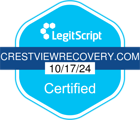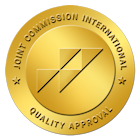Hydrocodone Acetaminophen 5-325 is a widely prescribed painkiller, combining an opioid and a non-opioid analgesic. While effective for managing moderate to severe pain, its potential for misuse, dependence, and addiction raises significant concerns. This article explores the uses, risks, and possible side effects of Hydrocodone Acetaminophen 5-325, highlighting the dangers of long-term use and the signs of addiction. It also discusses treatment options for addiction and strategies for managing pain without relying on opioids.
What is Hydrocodone Acetaminophen 5-325, and What is It Used For?
Hydrocodone Acetaminophen 5-325 is a prescription medication that combines two active ingredients: hydrocodone, an opioid pain reliever, and acetaminophen, a non-opioid analgesic commonly found in over-the-counter medicines like Tylenol. The numbers “5-325” refer to the dosage—5 mg of hydrocodone and 325 mg of acetaminophen per tablet. This medication is typically prescribed for the relief of moderate to moderately severe pain, especially after surgery, injury, or chronic pain that has not responded to other pain relief methods.
There are several brand names under which Hydrocodone Acetaminophen 5-325 is marketed, including Norco, Lortab, and Vicodin. These medications are available in varying dosages, with the combination of hydrocodone and acetaminophen offering different pain relief options. Despite the different names, the medication’s primary function and potential risks remain consistent across these brands.
How Does It Work In The Body To Relieve Pain?
Hydrocodone works by binding to specific receptors in the brain and spinal cord, known as opioid receptors. This binding blocks the transmission of pain signals, altering the body’s perception of pain. Acetaminophen complements this by enhancing the pain-relieving effects of hydrocodone.
In addition to boosting pain relief, acetaminophen also reduces fever by acting on the brain’s heat-regulating center. Together, these two substances work synergistically, providing more effective pain relief than either drug would alone.
What Are The Potential Side Effects Of Taking This Medication?
While Hydrocodone Acetaminophen 5-325 can be effective for pain management, it also comes with a range of potential side effects. Common side effects include:
- Drowsiness
- Dizziness
- Nausea
- Vomiting
- Constipation
- Lightheadedness
- Euphoria or mood changes
More serious side effects may include:
- Respiratory depression
- Severe allergic reactions (rash, itching, swelling)
- Liver damage (especially if taken in high doses due to acetaminophen)
- Confusion or hallucinations
Patients are advised to report any unusual symptoms to their healthcare provider immediately, especially signs of liver toxicity such as yellowing of the skin or eyes and dark urine.
How Long is It Typically Prescribed For?
Hydrocodone Acetaminophen 5-325 is generally prescribed for short-term use. In most cases, the duration ranges from a few days to a couple of weeks, depending on the severity of the pain and the patient’s overall health. It is commonly used post-surgery or after a significant injury.
For chronic pain conditions, doctors may prescribe this medication intermittently or under strict supervision to avoid dependency. The goal is to manage pain effectively while minimizing the risks associated with long-term opioid use.
Is Hydrocodone Acetaminophen 5-325 Addictive?
Hydrocodone Acetaminophen 5-325 carries a high potential for addiction, primarily because of the hydrocodone component. Hydrocodone is an opioid, which means it works by binding to opioid receptors in the brain and spinal cord. This binding not only alleviates pain but also stimulates the release of dopamine, a neurotransmitter associated with pleasure and reward. As a result, people may experience feelings of euphoria, which can make the medication psychologically reinforcing. Over time, individuals may misuse the medication to maintain or prolong those effects.
As the body becomes accustomed to the drug, tolerance develops. This means that the person needs to take higher and higher doses to achieve the same level of pain relief or euphoria, increasing the risk of physical dependence and addiction. When someone becomes physically dependent on hydrocodone, they may experience withdrawal symptoms, such as sweating, nausea, heightened anxiety, and irritability, if they stop taking it. This can further entrench the cycle of misuse and make it more difficult to quit without professional help.
What Are The Early Warning Signs of Dependence or Misuse?
The early signs of misuse or developing dependence on Hydrocodone Acetaminophen 5-325 may not always be obvious but can escalate quickly if not addressed. These early indicators are critical for recognizing when someone may be at risk and need intervention.
- Taking more than prescribed: Using the medication more often or in larger doses than directed, leads to tolerance.
- “Doctor shopping”: Visiting multiple doctors to get more prescriptions without them knowing.
- Obsession with obtaining or using the drug: Spending excessive time planning how to acquire or use the medication.
- Withdrawal symptoms: Experiencing physical symptoms like sweating, anxiety, or muscle pain when not taking the drug.
- Neglecting responsibilities: Focusing on obtaining the drug at the cost of work, relationships, or other obligations.
Recognizing these signs early can help prevent addiction and ensure timely intervention.
What are The Risks Of Long-Term Use, Even When Taken As Prescribed?
Even when taken exactly as prescribed, long-term use of Hydrocodone-Acetaminophen 5-325 can lead to serious health risks, including:
- Physical dependence and withdrawal symptoms: When the body relies on the drug, stopping it causes discomfort like sweating and anxiety.
- Liver damage due to prolonged exposure to acetaminophen: Extended use can harm the liver, leading to serious issues.
- Hormonal imbalances: Long-term use can disrupt the body’s hormone production.
- Cognitive impairment: Prolonged use may affect mental functions like memory and decision-making.
- Increased sensitivity to pain (opioid-induced hyperalgesia): Long-term use can make the body more sensitive to pain.
Patients should work closely with their healthcare providers to monitor these risks and consider alternative pain management strategies.
How Do People Develop an Addiction to Prescription Painkillers like Hydrocodone Acetaminophen 5-325?
Addiction often starts innocently, with the use of a legitimate prescription for pain relief. Initially, the medication is taken as prescribed to manage physical discomfort. However, over time, patients may begin to rely on the drug for emotional relief or to experience a sense of well-being, which can shift the focus from medical need to emotional or psychological comfort.
As tolerance to the drug builds, individuals may feel the need to increase the dose or frequency of use without consulting their doctor. This escalates the potential for misuse. Psychological factors, such as underlying stress, depression, or a history of substance abuse, can further fuel the development of addiction. These factors make it harder for individuals to stop using the medication despite the negative consequences.
How Can Someone Recognize When They Need Help For An Addiction to Hydrocodone Acetaminophen 5-325?
Signs that someone may need help include:
- Inability to stop using the drug despite negative consequences: Continued use of the drug even when it harms health or relationships.
- Using the medication to escape emotional distress: Turning to the drug to cope with stress, anxiety, or depression.
- Lying or being secretive about usage: Concealing the extent of drug use from others, often to avoid confrontation.
- Experiencing withdrawal symptoms: Physical or psychological discomfort when not using the drug, such as sweating or anxiety.
- Failed attempts to quit or cut back: Struggling to stop using the drug despite repeated efforts to do so.
Seeking help from a medical professional or addiction treatment center is an essential first step in recovery.
How Does Medication-Assisted Treatment (MAT)Help in Recovery?
 Medication-assisted treatment (MAT) combines behavioral therapy with medications like Suboxone or methadone to help treat opioid addiction. These medications reduce cravings and withdrawal symptoms, making recovery more manageable and less overwhelming.
Medication-assisted treatment (MAT) combines behavioral therapy with medications like Suboxone or methadone to help treat opioid addiction. These medications reduce cravings and withdrawal symptoms, making recovery more manageable and less overwhelming.
By blocking the euphoric effects of opioids, MAT helps prevent relapse. With physical cravings under control, individuals can focus on counseling and long-term recovery strategies, addressing the emotional and psychological aspects of addiction to achieve lasting sobriety. MAT offers a holistic approach to sustained recovery and improved quality of life.
What Are The Best Strategies for Managing Pain Without Opioids?
Managing pain without opioids involves a multidisciplinary approach that may include:
- Physical therapy: To strengthen muscles and improve mobility
- Cognitive-behavioral therapy (CBT): To address the emotional aspects of pain
- Non-opioid medications: Such as NSAIDs (e.g., ibuprofen), antidepressants, or anticonvulsants
- Acupuncture or chiropractic care: For chronic musculoskeletal pain
- Mindfulness and meditation: To help with pain perception and stress reduction
- Lifestyle changes: Including exercise, diet, and proper sleep hygiene
Preventing opioid misuse starts with patient education, proper prescribing practices, and ongoing monitoring by healthcare providers. Open conversations about pain management goals and concerns can also help patients make informed decisions about their treatment options.
Take the First Step Toward Recovery with Crestview Recovery
If you or someone you know is struggling with addiction, seek professional help today. Crestview Recovery offers personalized treatment for those battling substance abuse, including addiction to prescription painkillers like Hydrocodone Acetaminophen 5-325. Our compassionate team is here to guide you through recovery. Reach out to us now and take the first step toward lasting recovery!
































